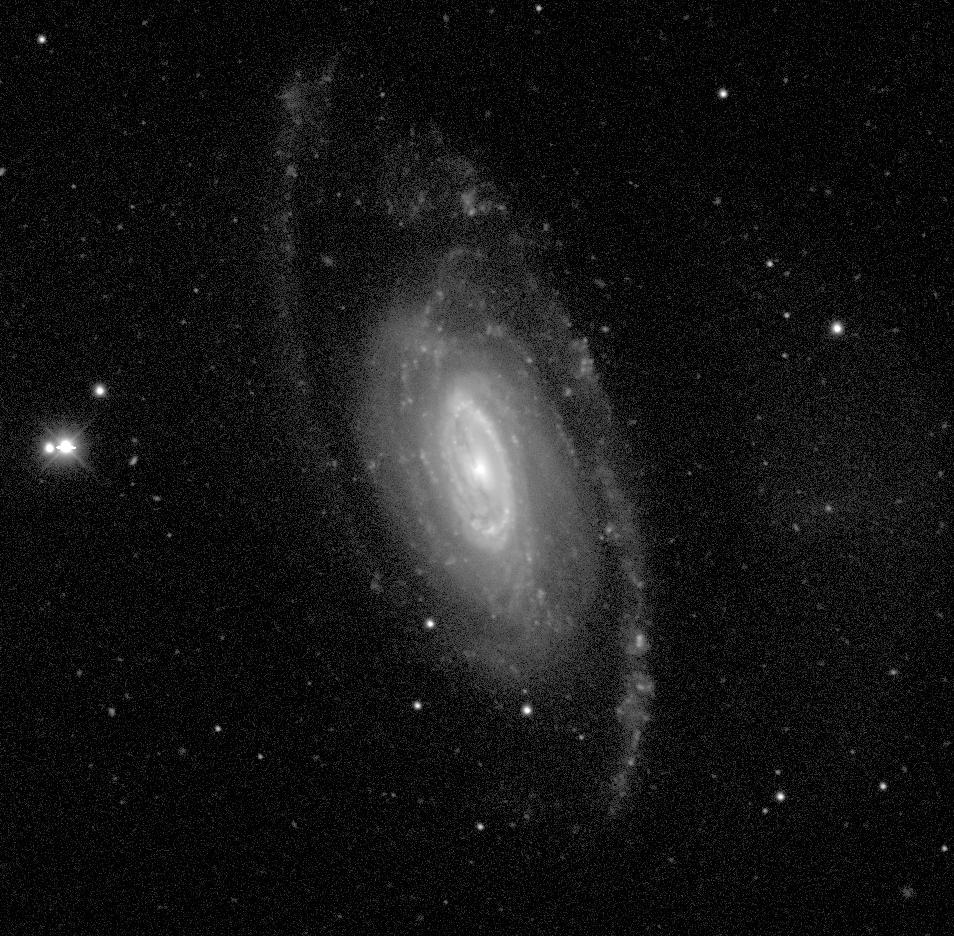

De Vaucouleurs Atlas Type: SAB(r)bc
Filter: B
Telescope: CTIO 1.5-m
North up , East left
Field Dimensions: 6.9 x 6.8 arcminutes
RC3 Type: SA(r)bc
RSA Type: Sbc(r)I-II
Surface Brightness Range Displayed: 18.0-26.0 mag per square arcsec
Absolute Blue Magnitude: -20.0
De Vaucouleurs Atlas Description:
The morphology of NGC 7531 is dominated by an exceptionally strong inner ring . Due in part to near-side extinction, the ring appears nonuniformly bright, being brighter and better defined on the west side. In the I-band, a weak trace of a bar is evident inside the inner ring (Buta 1987a; see closeup). In blue light, however, this bar is partly obscured, and the classification is SAB. The ring is imbedded in a broad diffuse zone that, when deprojected, is shaped like an oval. Its appearance is similar to the broad ovals seen in other galaxies, like NGC 4736 and NGC 1566 . The two main outer arms are very well-defined in blue light, but they virtually disappear in the I-band, implying very blue colors.
The interesting distribution of star formation and dust is shown in the B-I color index map. The inner ring is lined by active star-forming regions, the brightest and bluest of which are around its major axis. The map also shows the almost linear dust feature inside the inner ring . This feature helps to obscure the weak bar. In addition to the outer arms, the oval zone has considerable scattered and organized star forming features.
Buta (1987a) carried out a detailed photometric and kinematic study of NGC 7531 . The most interesting finding in this study was the location of the inner ring at the ``turnover radius " of the rotation curve. This radius, where the rotation curve changes from rising to flat, is sometimes highlighted by nuclear rings in SB galaxies. The inner ring of NGC 7531 is the type example of what is called a ``turnover ring ." No other good examples are known. Another interesting finding from this study was the existence of a large, low surface brightness galaxy just a few arcminutes west of NGC 7531 . This object is described in more detail in book Section 2.9}.